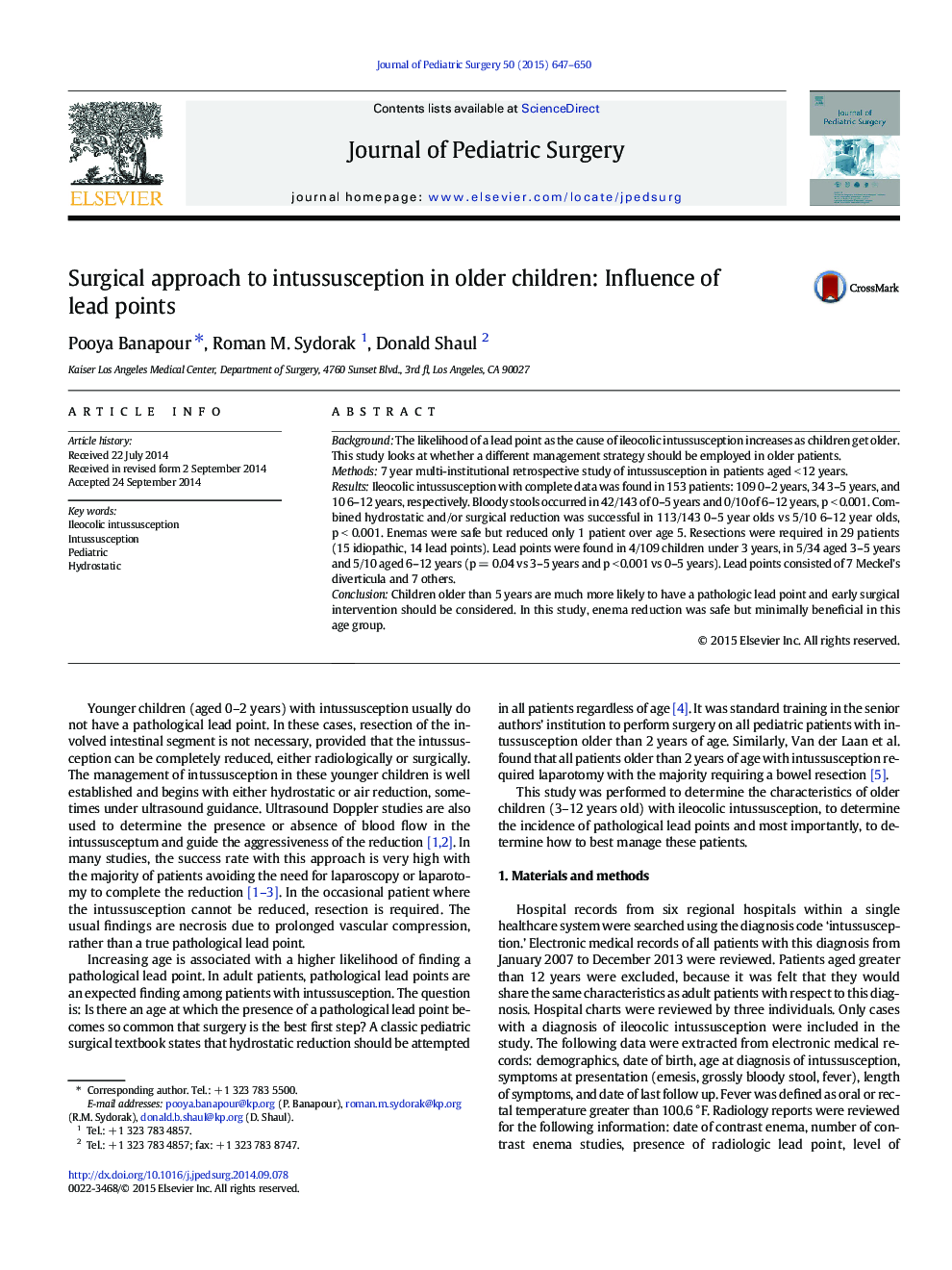| Article ID | Journal | Published Year | Pages | File Type |
|---|---|---|---|---|
| 6217037 | Journal of Pediatric Surgery | 2015 | 4 Pages |
BackgroundThe likelihood of a lead point as the cause of ileocolic intussusception increases as children get older. This study looks at whether a different management strategy should be employed in older patients.Methods7 year multi-institutional retrospective study of intussusception in patients aged < 12 years.ResultsIleocolic intussusception with complete data was found in 153 patients: 109 0-2 years, 34 3-5 years, and 10 6-12 years, respectively. Bloody stools occurred in 42/143 of 0-5 years and 0/10 of 6-12 years, p < 0.001. Combined hydrostatic and/or surgical reduction was successful in 113/143 0-5 year olds vs 5/10 6-12 year olds, p < 0.001. Enemas were safe but reduced only 1 patient over age 5. Resections were required in 29 patients (15 idiopathic, 14 lead points). Lead points were found in 4/109 children under 3 years, in 5/34 aged 3-5 years and 5/10 aged 6-12 years (p = 0.04 vs 3-5 years and p < 0.001 vs 0-5 years). Lead points consisted of 7 Meckel's diverticula and 7 others.ConclusionChildren older than 5 years are much more likely to have a pathologic lead point and early surgical intervention should be considered. In this study, enema reduction was safe but minimally beneficial in this age group.
